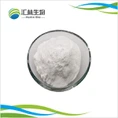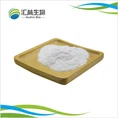The landscape of weight management and metabolic health is rapidly evolving with advanced pharmaceutical interventions. Two powerful players in this field are Tesamorelin and Retatrutide. Individually, they represent significant breakthroughs, but the question arises: can they be combined for synergistic results?
This article explores the science behind each compound, the theoretical rationale for their combination, and the critical safety and regulatory considerations you must understand.
Understanding Tesamorelin: The Targeted Fat Reducer
What is Tesamorelin?
Tesamorelin is a synthetic growth hormone-releasing hormone (GHRH) analog. It is comprised of the first 44 amino acids of GHRH, with a key modification that enhances its stability and reduces its susceptibility to somatostatin (a hormone that inhibits GH release). Its primary action is to stimulate the pituitary gland to produce and release the body's own pulses of growth hormone (GH).
Primary Use and Mechanism:
Tesamorelin is FDA-approved for a very specific purpose: reducing excess visceral abdominal fat in HIV-positive patients with lipodystrophy[1]. Unlike general weight loss drugs, it doesn't work primarily by suppressing appetite. Instead, it shifts the body's metabolism to target stubborn visceral fat-the biologically active fat surrounding organs that is linked to metabolic syndrome, insulin resistance, and cardiovascular risk. The increased GH pulses promote lipolysis (fat breakdown) and inhibit lipogenesis (fat storage) in the visceral area[3].
Understanding Retatrutide: The Triple-Hormone Innovator
What is Retatrutide?
Retatrutide is a novel, single-molecule triple agonist that targets three key metabolic receptors: GLP-1, GIP, and glucagon. It is currently under investigation in Phase III clinical trials and is not yet approved for commercial use by any major regulatory agency (like the FDA or EMA).
Primary Use and Mechanism:
As a GLP-1 receptor agonist (like semaglutide), Retatrutide suppresses appetite, slows gastric emptying, and promotes insulin secretion. As a GIP receptor agonist, it may further enhance metabolic benefits and improve insulin sensitivity. Most uniquely, its glucagon receptor agonist activity increases energy expenditure, pushing the body to burn more calories. This triple action leads to profound weight loss results observed in clinical trials[2][4], potentially exceeding those of current GLP-1 medications.
The Rationale for Combination: A Theoretical Synergy
The idea of combining Tesamorelin and Retatrutide is based on a theory of complementary, non-overlapping mechanisms:
- Targeting Different Fat Depots: Retatrutide is highly effective at reducing overall body weight and subcutaneous fat through caloric deficit. Tesamorelin is specifically potent at mobilizing visceral fat. Together, they could potentially address all fat compartments more completely.
- Counteracting Muscle Loss: A known side effect of significant calorie restriction and rapid weight loss (as with Retatrutide) is the loss of lean muscle mass. Growth hormone, stimulated by Tesamorelin, is profoundly anabolic and helps preserve, and potentially even build, lean muscle tissue during a caloric deficit. This could improve body composition outcomes far beyond what scale weight alone shows.
- Metabolic Enhancement: Both compounds can improve metabolic markers, albeit through different pathways-Retatrutide via insulin sensitization and Tesamorelin by reducing cardiometabolically dangerous visceral fat.

Dosing, Expected Results, and Significant Side Effects
Critical Disclaimer: There is no established, safe, or approved protocol for combining these compounds. The following is a purely theoretical discussion. Self-experimentation is extremely dangerous and strongly discouraged.
- Hypothetical Dosing: Any potential combination would require extremely careful medical supervision. It would likely involve a standard dosing protocol for Retatrutide (e.g., a weekly injection titrated up to a maintenance dose) alongside a daily subcutaneous injection of Tesamorelin (e.g., 1-2 mg). The timing of doses would be crucial to manage side effects.
- Expected Results: The theoretical outcome would be superior body recomposition: dramatic reduction in overall weight and visceral fat with exceptional preservation of lean muscle mass, leading to a lower body fat percentage and improved metabolic health.
- Potential Side Effects and Risks: Combining these powerful hormones amplifies the risk of side effects, which could be severe.
- From Retatrutide: Nausea, vomiting, diarrhea, constipation, gastroparesis, and in rare cases, pancreatitis.
- From Tesamorelin: Joint pain, muscle aches, edema (swelling), carpal tunnel syndrome symptoms, insulin resistance, and increased hunger.
- Combination Risks: The potential for exacerbated insulin resistance is a major concern. Furthermore, the long-term safety of such a combination is entirely unknown. There are theoretical concerns about the accelerated growth of pre-existing neoplasms due to the growth hormone pathway activity of Tesamorelin.
Global Regulatory Status: A Major Hurdle
This is perhaps the most significant practical barrier:
Tesamorelin is an FDA-approved drug (Egrifta®), but only for its specific HIV-related indication. Its off-label use for general weight loss or bodybuilding is not approved and often involves sourcing from unregulated compounding pharmacies or research chemical suppliers, raising risks of impurity and incorrect dosing.
Retatrutide is not approved for any use anywhere in the world. It is still an investigational drug. The only legal way to access it is by participating in a clinical trial. Any other source is selling a product of unknown safety, purity, and efficacy.
Conclusion: A Powerful but Purely Theoretical and High-Risk Approach
While the theoretical synergy between Tesamorelin and Retatrutide is fascinating from a biochemical perspective, it remains a speculative and highly advanced concept. The combination is not approved, not studied, and carries significant and potentially serious health risks.
This approach should only be considered in a rigorous clinical research setting under close medical supervision with extensive monitoring. For the general public, these compounds should be viewed as separate, powerful tools with distinct uses, not as a combinable stack.
References
[1] Falutz, J., et al. (2010). Metabolic effects of tesamorelin, a growth hormone-releasing factor, in patients with HIV-associated abdominal fat accumulation: a randomized, double-blind, placebo-controlled trial. HIV Medicine, 11(5), 331–340.
[2] Rosenstock, J., et al. (2023). Retatrutide, a GIP, GLP-1 and glucagon receptor agonist, for people with type 2 diabetes: a randomised, double-blind, placebo and active-controlled, parallel-group, phase 2 trial conducted in the USA. The Lancet, 402(10402), 529-544.
[3] Stanley, T. L., & Grinspoon, S. K. (2012). Effects of growth hormone-releasing hormone on visceral fat and metabolic profile in humans. Growth Hormone & IGF Research, 22(2), 59-63.
[4] Jastreboff, A. M., et al. (2022). Triple–Hormone-Receptor Agonist Retatrutide for Obesity. The New England Journal of Medicine, 387, 94-95.





